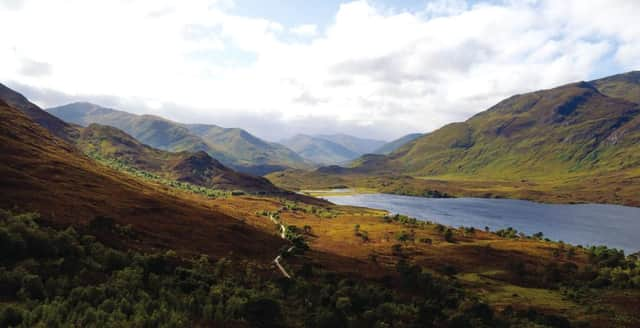Changing mood increases sales of private estates


In a market of reducing supply, only 16 Scottish estates, totalling some 70,000 acres sold for a combined £68 million in 2017, compared to 23 totalling 100,000 acres selling for over £80m in 2016.
What was of interest, notes Anna Henderson, associate at Galbraith, was the 8 per cent increase in the number of private estate deals in 2017 compared to 2016.
Advertisement
Hide AdAdvertisement
Hide AdAccording to Henderson, this reflects the changing shape and mood of both the market and sellers, with an increasing number of estates now being sold off market.
However, she says that those people interesting in buying estates, particularly in private deals, need to have experts on their side.
“Finding an estate or farm that suits your needs can take months or even years and can be a daunting and challenging prospect.
“Buying such a property is a hugely significant and expensive undertaking and it is extraordinary that the majority of buyers, while taking legal advice, fail to take independent property or strategic advice, relying on the selling agent, who is of course acting for the seller.”
She says: “A house buyer will always receive or instruct a homebuyer’s report, whereas an estate purchaser’s first port of call is often a lawyer with an instruction to effectively bid blind.
“It can be a complicated asset with rights and obligations which are always best understood before committing to a price and an expensive adventure.”
As examples, Galbraith recently advised a private buyer on the purchase of two neighbouring properties in the Highlands which involved six months of negotiations.
Henderson says: “There were many complexities to negotiate along the way due to the nature of the estate which comprised a mix of elements including sport, forestry, buildings and farmland.”
Advertisement
Hide AdAdvertisement
Hide AdOn another recent deal, Galbraith acted for overseas clients who sought advice moments before they agreed to a deal to buy an estate.
The purchase was later completed at a figure £1.5 million less than at the point they sought help.
Of the buyers, Henderson says: “There is still quite a healthy level of home-bred wealth, business people who own com-panies in Aberdeen, Glasgow or Edinburgh who already have an association with Scotland.
“Most are in their 50s, have made their money and perhaps have children who are old enough to enjoy an estate.”
English buyers see Scotland as value for money and the favourable exchange rate is likely to see a rise in foreign interest.
She says: “For most buyers an estate is a luxury purchase to enjoy, not unlike a superyacht or a Lamborghini.
“They are less concerned about income from agricultural land, field sports or accommodation but some will find opportunities to develop woodland or a wind farm.
Henderson believes a shift in interest over the last two decades has seen conservation overtake shooting and many new buyers are interested in creating areas of sustainable wilderness.
Advertisement
Hide AdAdvertisement
Hide Ad